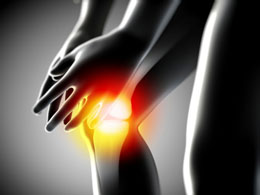If you want to know more about Chondromalacia or runner's Knee, read this article that discusses the symptoms, causes and treatments available.

Chondromalacia is the wearing down of the cartilage under the kneecap. It works like a natural shock absorber and with time and excessive strain on the body, starts wearing away and cracking which leads to pain in the knee and inflammation. This condition is often known as runner's knee or patellofemoral pain. When this happens the knee hurts even when you squat down or climb stairs. This kind of condition can be observed in the older people, football players, dancers and athletes. All those people whose work involves using their legs and knees to a large extent suffer from this condition. That is the reason it is also called runner's knee. At times this can occur also as a result of injury to the knee or patella.
Symptoms
There are no other symptoms of Chondromalacia except the pain that the patient feels. There is tenderness in the knee area and a dull pain in the frontal portion of the knee. Whenever the patient tries to fold his legs there is a grinding noise as the cartilage rubs against the knee bone. The knee area also swells up considerably.
Causes
As stated earlier it is often caused due to overstrain and over use. In case of young people it is generally caused due to some kind of injury to the knee area thus leading to the patellofemoral pain. Injuries should also be major to result in Chondromalacia such as the turning of the feet inwards due to an impact, which would result in the twisting of the kneecap sideways. Wearing improper or worn out shoes can also lead to this condition. For older people, the pain in the patellofemoral area is due to arthritis, which is the result of age, that causes the wearing down of the cartilage.
Treatment
The first step of treatment would be to stop the physical exercise that the patient is undertaking and prescribe rest. Patient should be asked not to do anything that induces pain. At times physicians also prescribe painkillers for the time being so that the patient is relieved of the immediate pain and swelling. To get temporary relief some patients also apply ice and pain relieving ointments, but to get long term relief doctors prescribe exercises which help to strengthen the adjacent muscles and also are not very straining on the knees. If none of these methods work, then the last method is surgery, which involves scraping of the uneven edges of the cartilage due to which the friction and pain is created. At times surgeons also open the kneecap and realign the kneecap and also relieve the pressure on the cartilage. This is known as Realignment.
To avoid such conditions it is better to do stretching exercises so that the body is fit and also not over stressed. It is always important to include rest periods in your training program.
Disclaimer: This article is for informative purposes only and does not in any way attempt to replace the advice offered by an expert on the subject.


 Chondromalacia is the wearing down of the cartilage under the kneecap. It works like a natural shock absorber and with time and excessive strain on the body, starts wearing away and cracking which leads to pain in the knee and inflammation. This condition is often known as runner's knee or patellofemoral pain. When this happens the knee hurts even when you squat down or climb stairs. This kind of condition can be observed in the older people, football players, dancers and athletes. All those people whose work involves using their legs and knees to a large extent suffer from this condition. That is the reason it is also called runner's knee. At times this can occur also as a result of injury to the knee or patella.
Chondromalacia is the wearing down of the cartilage under the kneecap. It works like a natural shock absorber and with time and excessive strain on the body, starts wearing away and cracking which leads to pain in the knee and inflammation. This condition is often known as runner's knee or patellofemoral pain. When this happens the knee hurts even when you squat down or climb stairs. This kind of condition can be observed in the older people, football players, dancers and athletes. All those people whose work involves using their legs and knees to a large extent suffer from this condition. That is the reason it is also called runner's knee. At times this can occur also as a result of injury to the knee or patella.